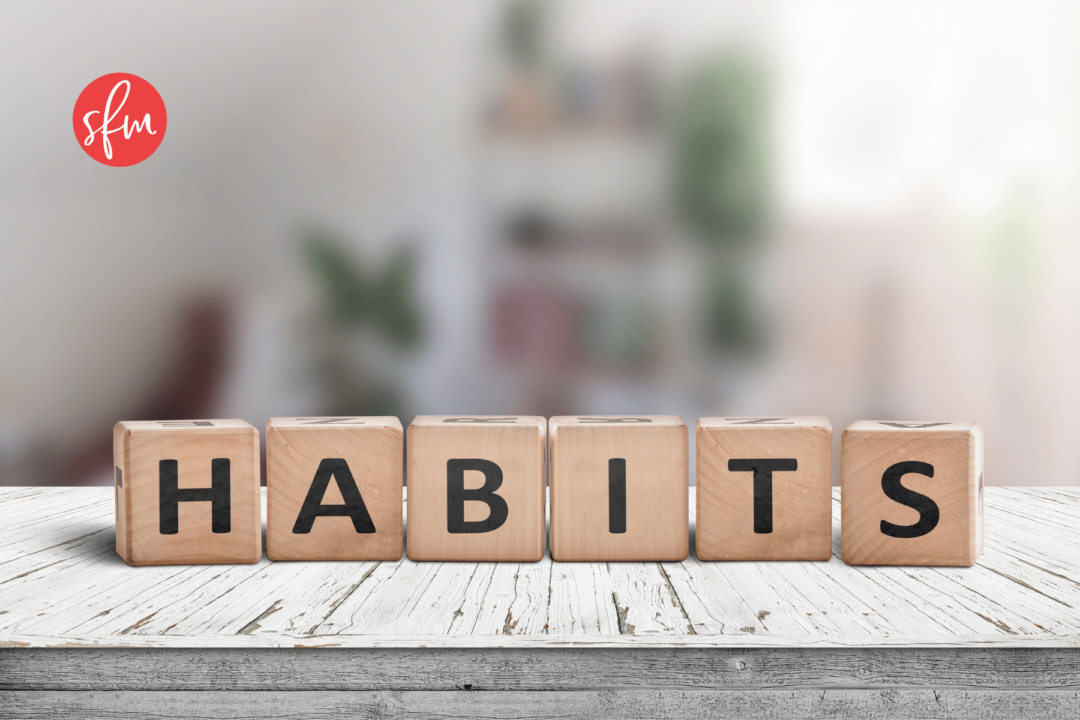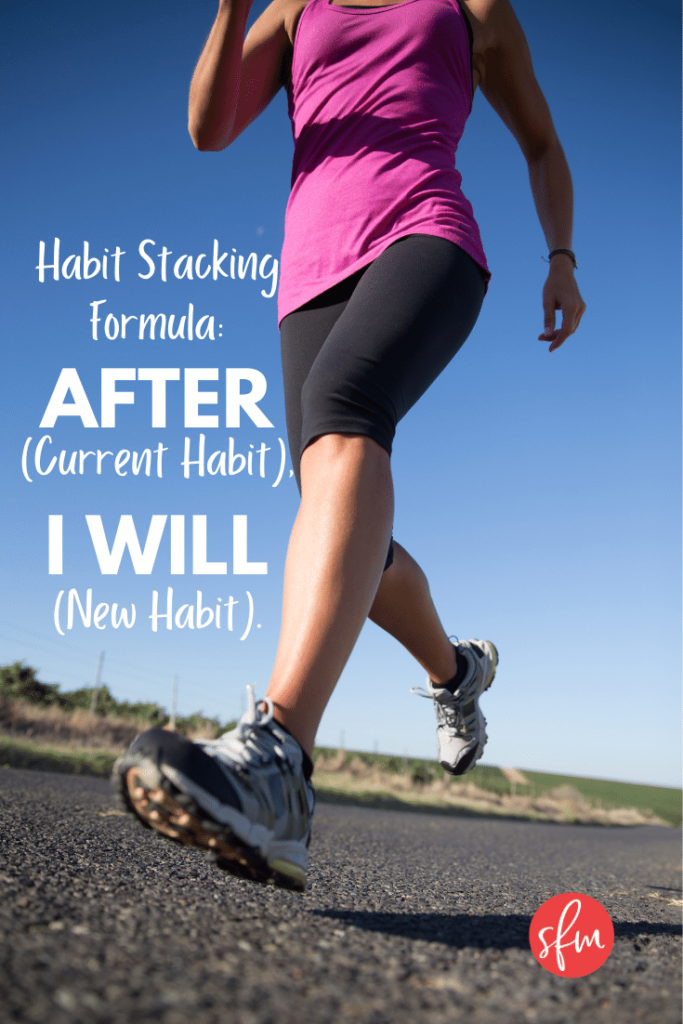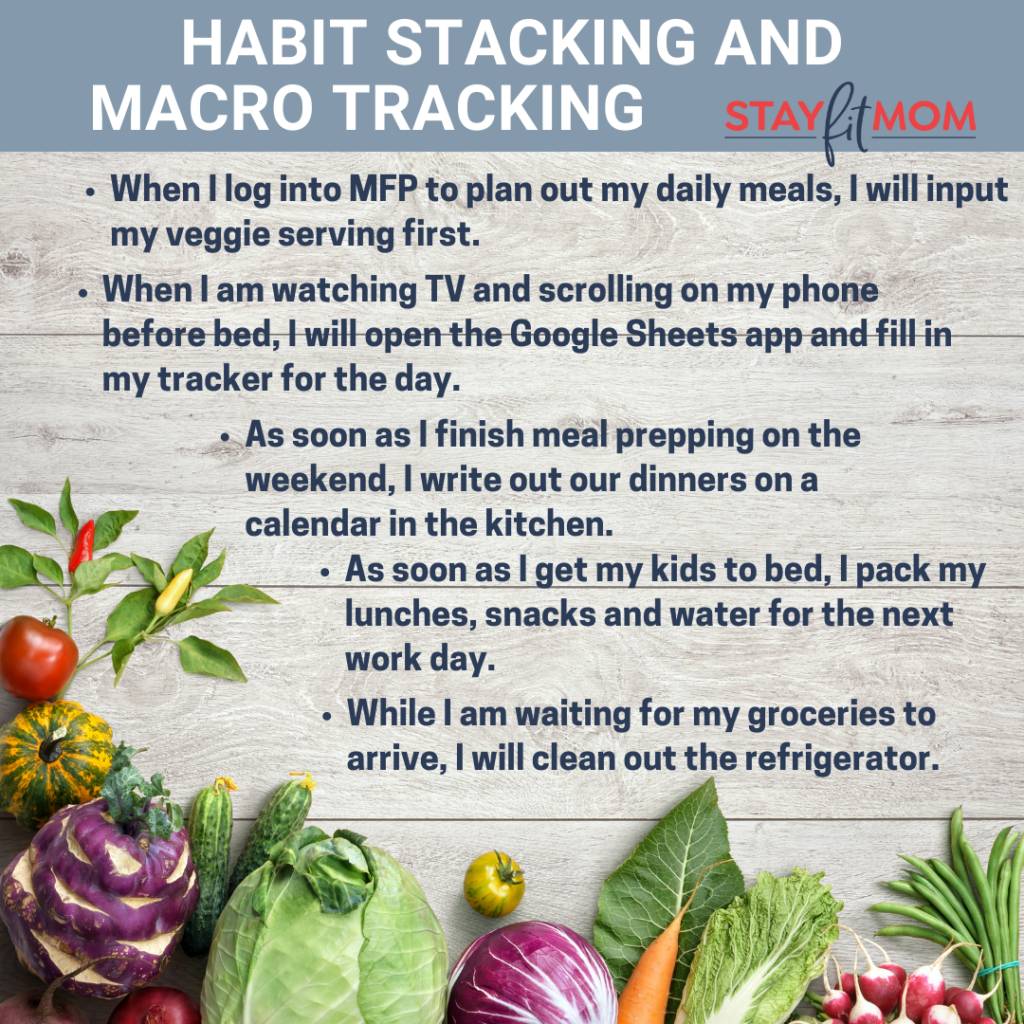Habit Stacking is a great tool that can be utilized in macro counting.
As coaches, we want all of our clients to be successful and get the results they desire. I often suggest the book, Atomic Habits by James Clear, to my clients who seem to be struggling with nailing down consistency in nutrition, meal planning or workouts. This book has opened my eyes to how we function, how habits work, and most importantly, how to make new habits and how to break ones that are not serving us.
The more habits we have surrounding our health and fitness goals – weekly meal planning and prep, regular grocery shopping, checking in weekly with our SFM nutrition coach, hitting our prescribed macro RX, eating vegetables daily, etc – the more automatic our healthy lifestyle becomes. The definition of habit is “an automatic response to a specific situation”. To quote James Clear,
“Habits are the compound interest of self-improvement. The same way that money multiplies through compound interest, the effects of your habits multiply as you repeat them. They seem to make little difference on any given day and yet the impact they deliver over the months and years can be enormous.”
One of the best ways to start a new habit is by using a term called Habit Stacking.
Habit Stacking is when we identify a current habit we ALREADY DO daily, and stack a new behavior on top of it. Per James Clear, habit stacking “works best when the cue is highly specific and immediately actionable”. To take this back to SFM Coaching, it’s the difference between saying “I will do better tracking and hitting my numbers on the weekend” and “While I scroll on my phone at night, I will log into MFP and pre plan my meals for the following day”.
The habit stacking formula is:
After [CURRENT HABIT], I will [NEW HABIT].
Some examples of Habit Stacking that are used by the SFM Coaches:
- While my coffee is brewing, I will drink one glass of water.
- Before I log off my computer for the day, I will fill in my tracker for that day.
- When I am watching TV and scrolling on my phone before bed, I will open the Google Sheets app and fill in my tracker for the day.
- As soon as I finish meal prepping on the weekend, I write out our dinners on a calendar in the kitchen.
- When I log into MFP to plan out my daily meals, I will input my veggie serving first.
- I will change into my workout clothes right when I get home from work.
- After I change into my pajamas, I will lay out my workout clothes for the next morning.
- As soon as I get my kids to bed, I pack my lunches, snacks and water for the next work day.
- When I take off my Apple Watch/FitBit to charge, I will write down my steps for the day.
- While I walk my dog, I will listen to an SFM SOS video.
Once you have figured out how to successfully implement habit stacking for a new habit, you can chain them together:
- On Thursdays after I put my kids to bed, I will meal plan for the following week.
- After I meal plan, I will make a grocery list.
- After I make my grocery list, I will log on to Instacart and input my grocery order.
- While I am waiting for my groceries to arrive, I will clean out the refrigerator.
Some tips on how to be successful with Habit Stacking:
- Consider when you are most likely to be successful. If you know evenings before dinner are hectic for you and your family, adding a workout right when you get home from work may not be the best idea. I have had to change the time I do my daily meditation as I was always getting interrupted by my kids and my husband’s morning alarm!
- Your cue should have the same frequency as your desired habit. Habits are built with FREQUENCY, not time. So keep this in mind when you are working on your habit stacking!
- Don’t be vague with your cues! When I take a break at work, I will go for a 4 minute walk around the building. What time will you take your break? Will you walk at every break or just one? This can be adjusted to “When I take my 10 AM break at work, I will go for a 4 minute walk around the building”.
I always ask my clients to look back on a successful week of macro counting – what did they do that helped them succeed? In the same way, it’s always helpful to reflect on our current habits, as well as other habits we are struggling to be consistent with. Being specific and clear with our intentions and translating them to daily habits can make all the difference.








No Comments